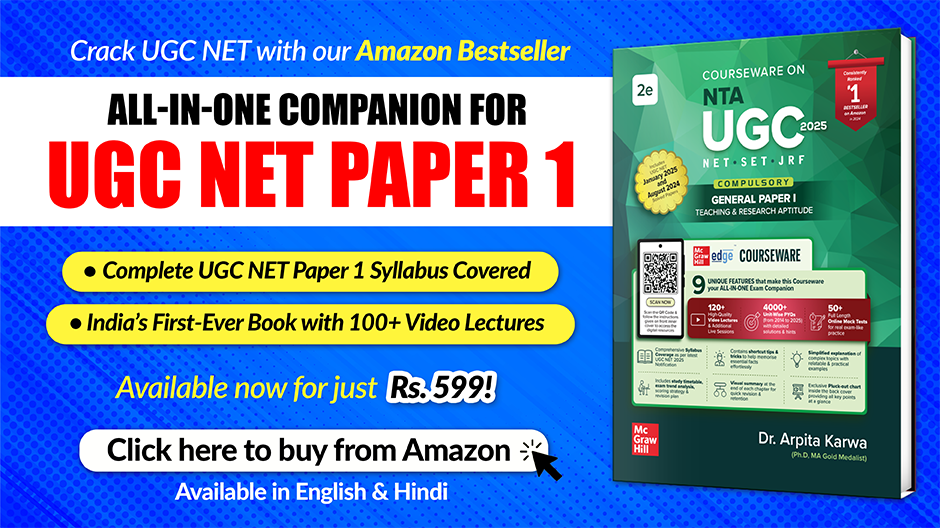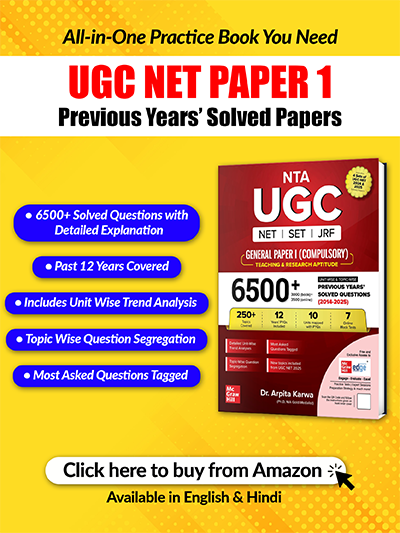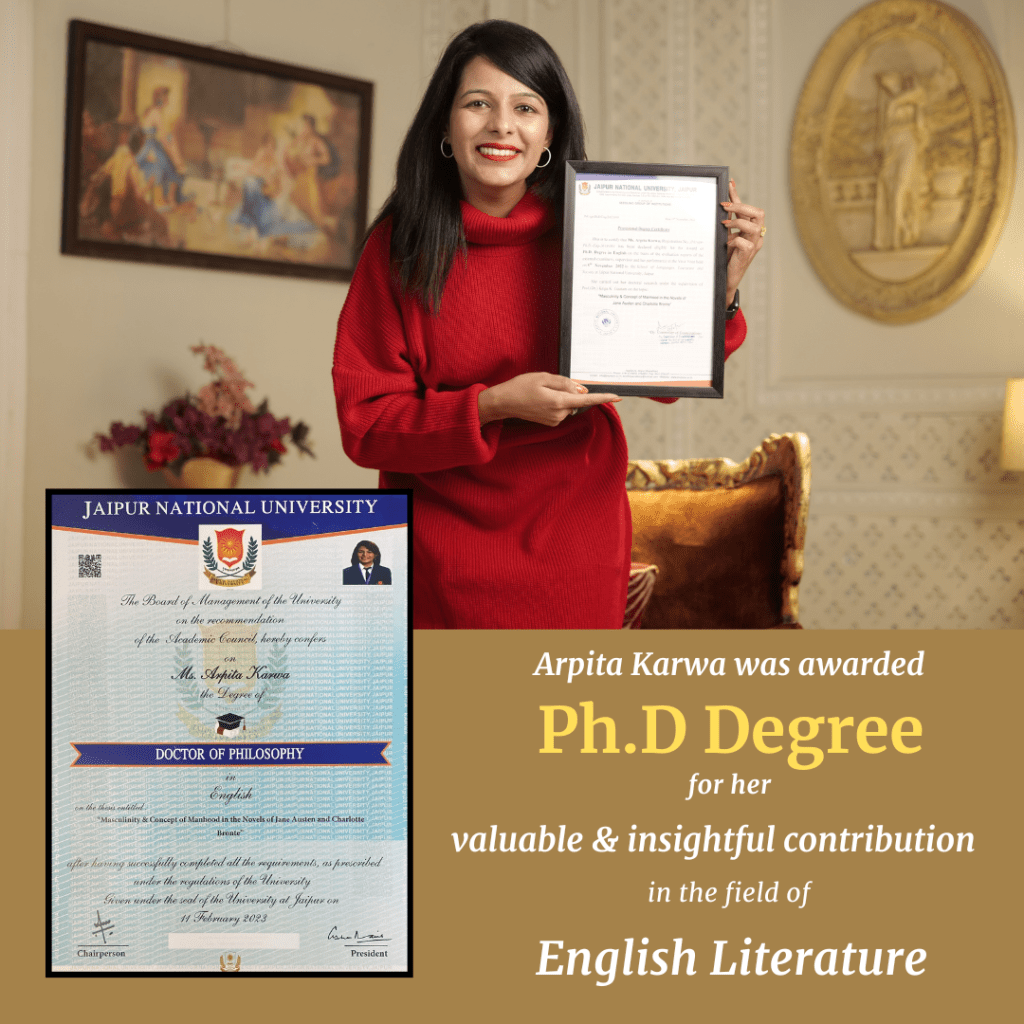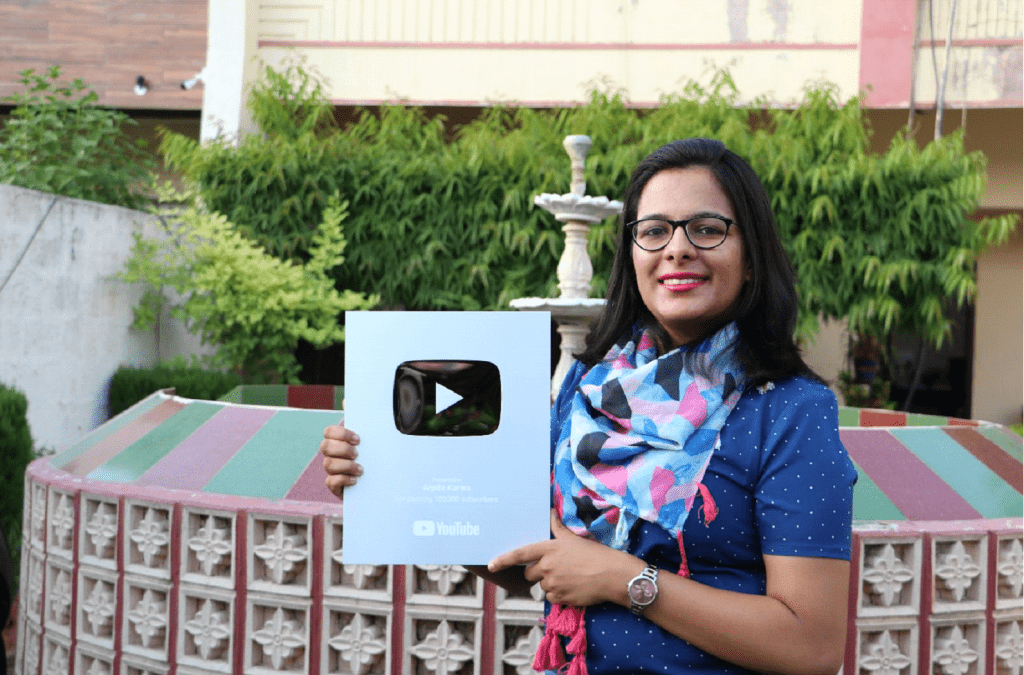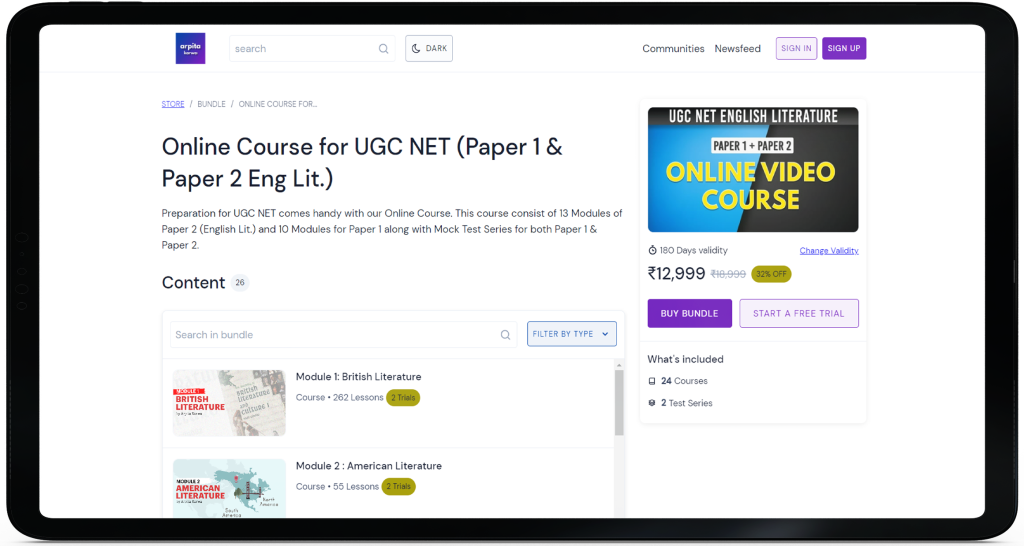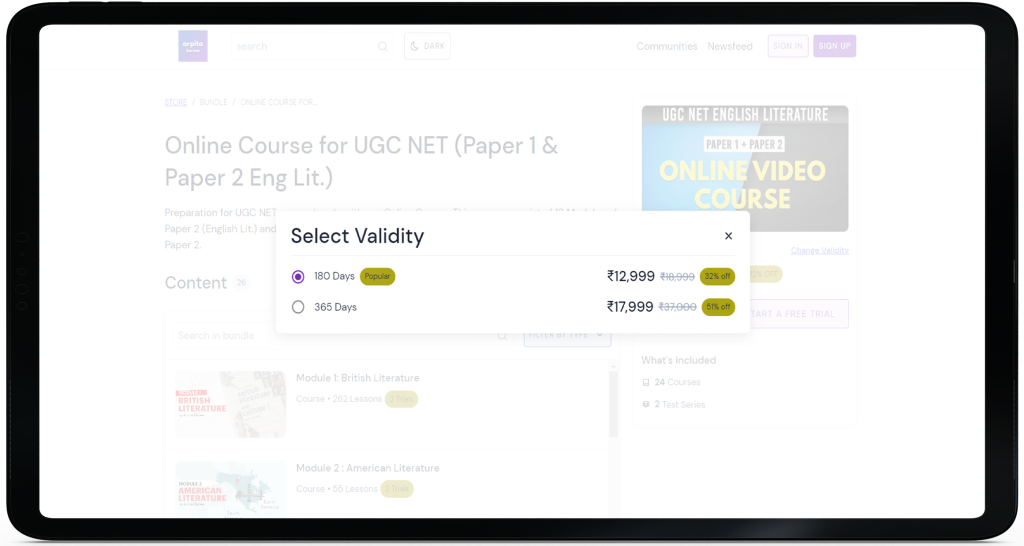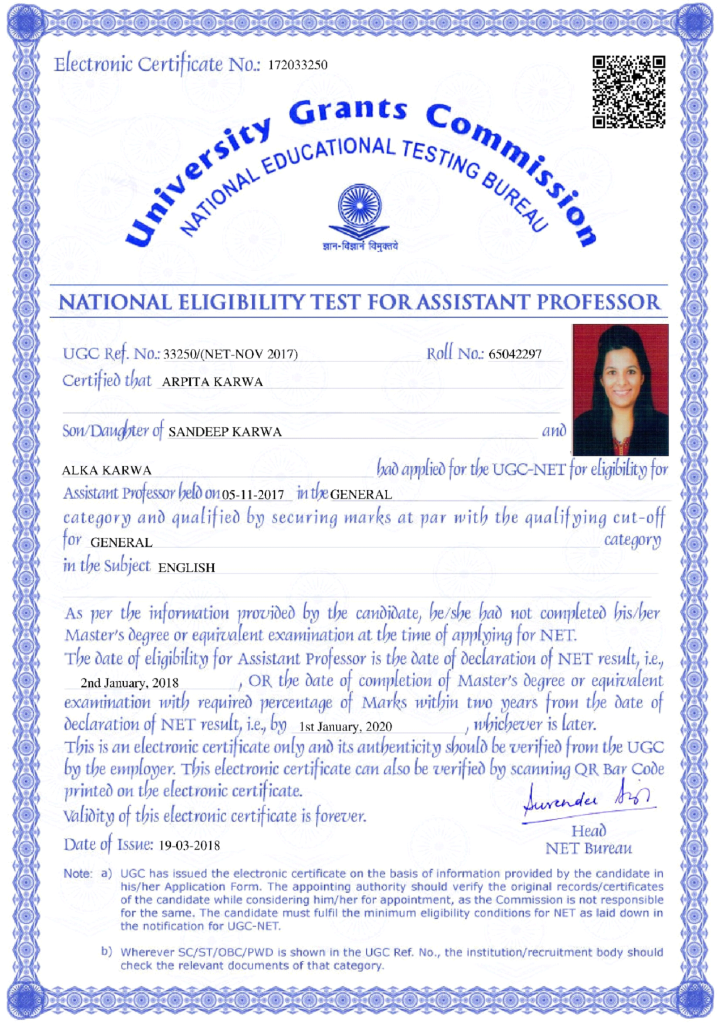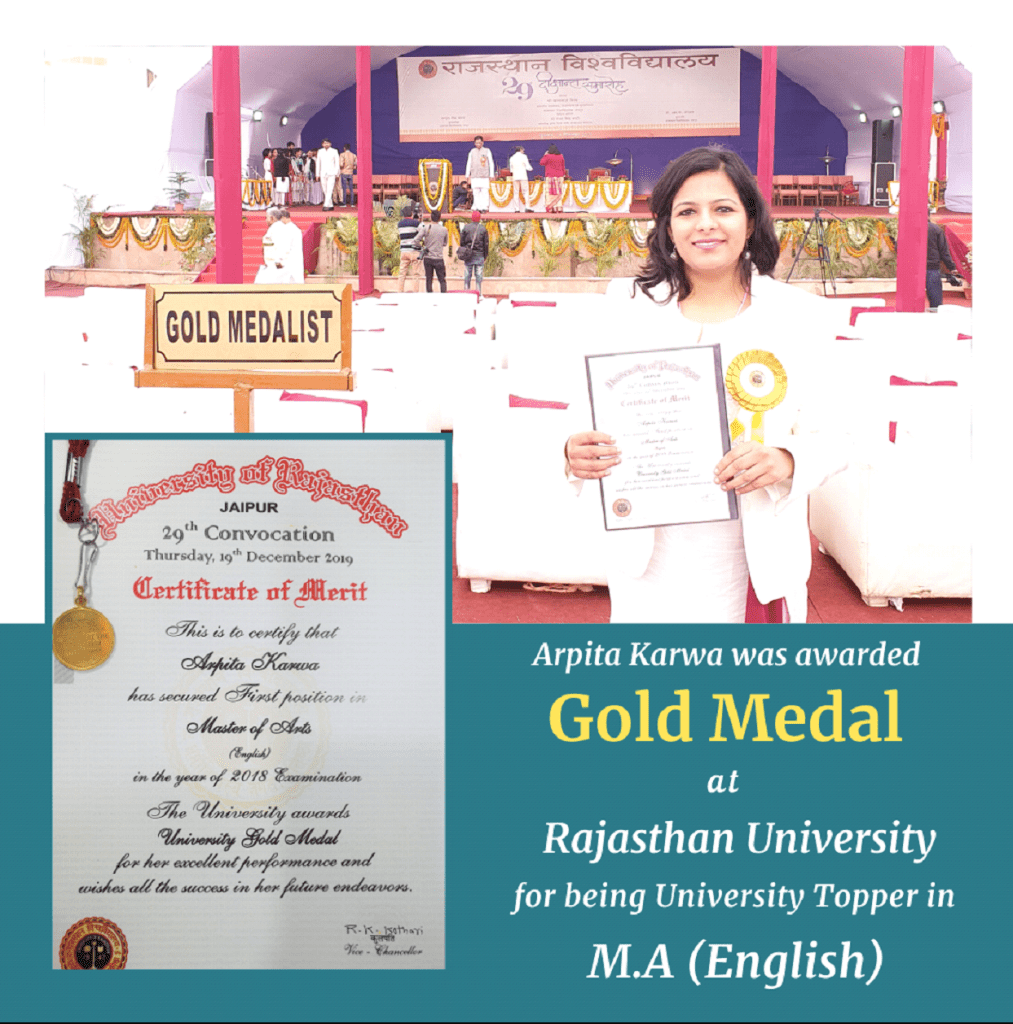January 2017 : Paper 3
October 19, 2022 2025-10-13 13:35January 2017 : Paper 3
Q.1) Who among the following is not a diasporic writer?
[1] Beryl Bainbridge
[2] Timothy Mo
[3] Hanif Kureishi
[4] Sam Selvon
Answer: 1
Q.2) “A text is not a line of words releasing a single ‘theological’ meaning (the ‘message’ of the Author-God) but a multi-dimensional space in which a variety of writings, none of them original, blend and clash. The text is a tissue of quotations drawn from the innumerable centres of culture.”
Which of the following best expresses the position stated above?
[1] A text is a tissue of lies that has no referential and cultural validity.
[2] A text is a communication from the Author-God with multiple meanings.
[3] A text is a force field of ambiguity where meanings collapse in the face of opposition.
[4] A text is a linguistic construct without any unity of meaning and is linked to multiple sources of language and culture.
Answer: 4
EXPLANATION:
The question is about identifying which statement best reflects the position expressed in the quote, which describes the nature of a text as a complex, multi-dimensional entity rather than a simple, unified expression of meaning from a single author or source.
The quote emphasizes that a text is not just a single message from an “Author-God,” but rather a “tissue of quotations” that incorporates multiple sources of culture and meaning. It suggests that texts are constructed from various influences and cultural references, with no singular, original, or fixed meaning.
[1] A text is a tissue of lies that has no referential and cultural validity: does not capture the essence of the quote. The quote does not claim that a text is a “lie” or that it has no cultural validity.
[2] A text is a communication from the Author-God with multiple meanings: This misrepresents the quote because it still
Q.3) In William Congreve’s The Way of the World Fairall is Lady Wishfort’s
[1] Son
[2] Son-in-law
[3] Nephew
[4] Servant
Answer: 2
Q.4) Match the periodical with the founder/s :
List – I
A. The Egoist
B. The English Review
C. Blast
D. Poetry : A Magazine of Verse
List – II
I. Wyndham Lewis and Ezra Pound
II. Harriet Monroe
III. Harriet Weaver and Dora Marsden
IV. Ford Madox Ford
[1] A-II, B-III, C-I, D-IV
[2] A-III, B-I, C-IV, D-II
[3] A-III, B-IV, C-I, D-II
[4] A-III, B-II, C-I, D-IV
Answer: 3
Q.5) Which statement best expresses the theme of Coleridge’s “The Rime of the Ancient Mariner”?
[1] To kill a living creature is immoral.
[2] People should honour and respect all living things.
[3] Prayer can accomplish miracles.
[4] True harmony is achieved only through cooperative effort.
Answer: 2
Q.6) “The Comprehensible Output Hypothesis” was proposed by
[1] Stephen Krashen
[2] M.A.K. Halliday
[3] Merrill Swain
[4] Gertrude Buck
Answer: 3
Q.7) In Tristram Shandy Corporal Trim’s brother Tom describes the oppression of a black servant in a sausage shop in Lisbon that he visited. This episode is inspired by a letter Laurence Sterne received from a black man. Sterne’s reply became an integral part of 18th century abolitionist literature.
Name the person who wrote the aforementioned letter to Sterne.
[1] William Wilberforce
[2] Ignatius Sancho
[3] William Blackstone
[4] John Hawkins
Answer: 2
Q.8) In Bertolt Brecht’s Mother Courage and Her Children, which song does Yvette sing to Mother Courage and Kattrin?
[1] “The Song of the Great Souls of the Earth”
[2] “The Fraternization Song”
[3] “The Song of the Great Capitulation”
[4] “The Memorial Song”
Answer: 2
Q.9) In Gustave Flaubert’s Madame Bovary, under what pretext does Emma go every week for her clandestine meeting with Leon in Rouen?
[1] Under the pretext of going to the church for weekly confession.
[2] Under the pretext of meeting her blind friend who lives alone.
[3] Under the pretext of weekly shopping.
[4] Under the pretext of taking piano lessons.
Answer: 4
Q.10) Identify the two books by C.S. Lakshmi (Ambai) published in English translation :
I. Astride the Wheel
II. Going Home
III. A Purple Sea
IV. In a Forest, A Deer
The right combination according to the code is
[1] III and II
[2] I and II
[3] I and IV
[4] III and IV
Answer: 4
Q.11) Elizabeth Barrett Browning’s Sonnets from the Portuguese is
I. a sequence of forty four Petrarchan sonnets.
II. a rewriting of Popean didactic verse.
III. a depiction of a contemporary setting and small events of ordinary life.
IV. a scathing criticism of the British colonial enterprise.
The right combination according to the code is
[1] I and II
[2] I and III
[3] II and IV
[4] I and IV
Answer: 2
Q.12) In The Story of My Experiments with Truth, M.K. Gandhi covers the narrative of his life from early childhood through to
[1] 1925
[2] 1929
[3] 1921
[4] 1927
Answer: 3
Q.13) In a writing system the minimal unit that can cause a difference of meaning is called
[1] phoneme
[2] grapheme
[3] morpheme
[4] jargon
Answer: 2
Q.14) Nnu Ego is a character in
[1] Chinua Achebe’s Anthills of Savannah
[2] Chimamanda Ngozi Adichie’s Half of a Yellow Sun
[3] Buchi Emecheta’s The Joys of Motherhood
[4] Ben Okri’s The Famished Road
Answer: 3
Q.15) Match the word with definition :
List – I
A. Etymon
B. Code switching
C. Cognate
D. Pragmatics
List – II
I. Changing from one language variety to another in discourse
II. Rules governing the social use of language
III. Etymological source of a word
IV. Words with a common ancestor
[1] A-IV, B-I, C-III, D-II
[2] A-III, B-II, C-IV, D-I
[3] A-III, B-I, C-IV, C-II
[4] A-IV, B-I, C-II, D-III
Answer: 3
Q.16) What would help a reader recognize Keats’s “To Autumn” as a poem from the Romantic period?
[1] Its logical succession of images
[2] Its concise use of couplets
[3] Its lavish natural imagery
[4] Its use of iambic pentameter
Answer: 3
Q.17) Which of the following is an accurate description of ‘heteroglossia’?
[1] Heteroglossia makes the job of the novelist easier by incorporating diversity into the novelistic structure.
[2] Heteroglossia functions in a novel in alliance with its stylistic system incorporating multiple voices inscribed in social language and differentiated components of a writer’s ideological position.
[3] Heteroglossia creates concrete conceptualisations through language in association with the singular view of the artistic effort resulting in the unified world of the novel.
[4] Heteroglossia enters the linguistic universe of the novel to homogenize its multiple differences and voices in a singular vision of accomplished structure.
Answer: 2
Q.18) In Ulysses Leopold Bloom works for a Dublin
[1] bar
[2] park
[3] newspaper
[4] bank
Answer: 3
Q.19) Which pair of plays belongs to the early career of Harold Pinter?
I. The Caretaker
II. One for the Road
III. Celebration
IV. The Room
The right combination according to the code is
[1] I and III
[2] II and III
[3] I and IV
[4] II and IV
Answer: 3
Q.20) Who among the following contemporaries of John Donne wrote the following lines on his death : “Here lies a king, that ruled as he thought fit/The universal monarch of wit”?
[1] George Herbert
[2] Henry King
[3] Thomas Carew
[4] Henry Crashaw
Answer: 3
Q.21) In his poem “Australia” A.D. Hope says that
I. Australia is “without songs, architecture, history”.
II. “Her five cities are like five dry rivers.”
III. The poet turns to her “to find/The Arabian desert of the human mind/Hoping if still from deserts prophets come.”
IV. “She is the first of lands, the warmest.”
[1] I and III
[2] II and III
[3] III and IV
[4] I and IV
Answer: 1
Q.22) Basic English, a simplified and fundamental framework of English, was formulated by
I. I.A. Richards
II. Alastair Fowler
III. William Empson
IV. C.K. Ogden
The right combination according to the code is :
[1] I and II
[2] II and III
[3] I and IV
[4] I and III
Answer: 3
Q.23) “Britons will never be slaves !” – felt proud Britons in the eighteenth century. A great many Britons, though, had no qualms about owning slaves and profiting from them. Who among the following British authors self-consciously engaged with the issue of slavery in some poems?
I. Hannah More
II. Mary Collier
III. Anna Seward
IV. Anna Yearsley
The right combination according to the code is
[1] I and III
[2] I and IV
[3] II and III
[4] III and IV
Answer: 2
Q.24) Match the Novelist with the work :
List – I
A. Anita Desai
B. Nayantara Sahgal
C. Arun Joshi
D. Kamala Markandaya
List – II
I. Rich Like Us
II. The Nowhere Man
III. In Custody
IV. The Last Labyrinth
Codes :
[1] A-III, B-II, C-IV, D-I
[2] A-III B-I, C-IV, D-II
[3] A-II, B-I, C-IV, D-III
[4] A-III, B-IV, C-I, D-II
Answer: 2
Q.25) Identify the right chronological sequence :
[1] The American Pastoral – Sister Carrie – The Great Gatsby – Beloved
[2] The Great Gatsby – Sister Carrie – Beloved – The American Pastoral
[3] Sister Carrie – The Great Gatsby – Beloved – The American Pastoral
[4] Sister Carrie – The Great Gatsby – The American Pastoral – Beloved
Answer: 3
Q.26) In which of the following senses did Marx and Engels originally use the term “ideology” in The German Ideology?
[1] Something that mystifies the actual material conditions of society, a sort of false consciousness.
[2] The elaborate structures and institutions that mark the bourgeoise society.
[3] The concepts of base and superstructure that govern the economic relations of the society.
[4] The fundamental class consciousness of the proletariat which leads to their awakening.
Answer: 1
Q.27) The plot of this Coetzee novel unravels the narrative of a poor man of colour trying to survive in a civil-war situation, never taking sides. Identify the novel.
[1] Disgrace
[2] Age of Iron
[3] Waiting for the Barbarians
[4] Life and Times of Michael K.
Answer: 4
Q.28) Which of the following lines of T.S. Eliot is used by Anita Desai as the epigraph for her novel, Baumgartner’s Bombay?
[1] “I will show you fear in a handful of dust,” The Waste Land
[2] “In my beginning is my end”, “East Coker”
[3] “Human kind cannot bear very much reality”, “Burnt Norton”
[4] “I have measured out my life with coffee spoons,” “Love Song of J. Alfred Prufrock”
Answer: 2
Q.29) In the General Prologue to The Canterbury Tales which two characters are examples of deep Christian goodness?
I. the Summoner
II. the Parson
III. the Ploughman
IV. the Pardoner
The right combination according to the code is
[1] I and II
[2] II and IV
[3] II and III
[4] I and IV
Answer: 3
Q.30) Identify Falstaff’s first words in Henry IV, Part I :
[1] “Now, Harry, what time of day is it, lad?”
[2] “Now, Hal, what time of day is it, lad?”
[3] “Now, Harry, what time of night is it, lad?”
[4] “Now, Hal, what time of night is it, lad?”
Answer: 2
Q.31) Anna Barbauld, Laetitia Elizabeth London, Charlotte Smith, Mary Robinson and Felicia Hemans are
[1] first wave feminists
[2] women poets of the Romantic period
[3] Victorian writers of popular fiction
[4] nineteenth century stage artists
Answer: 2
Q.32) Ray Bradbury has titled one of his short story collections – Golden Apples of the Sun – after the last line of a W.B. Yeats poem. Which poem?
[1] “The Death of Cuchulain”
[2] “The Peacock”
[3] “The Hour Before Dawn”
[4] “The Song of Wandering Aengus”
Answer: 4
Q.33) Which play by Tom Stoppard set in Zurich during the First World War presents a character’s interactions with James Joyce as he was writing Ulysses, Tristran Zara during the rise of Dadaism, and Lenin leading up to the Russian Revolution, all of whom were living in Zurich at that time?
[1] After Magritte
[2] Dirty Linen
[3] Artist Descending a Staircase
[4] Travesties
Answer: 4
Q.34) “Most blameless is he, centered in the sphere
Of common duties, decent not to fail
In offices of tenderness…”
In these lines from “Ulysses”, what does Ulysses suggest about Telemachus?
[1] He shows heroic qualities.
[2] He is patient and selfless.
[3] He is very much like his father.
[4] He may be too tender-hearted to be king.
Answer: 2
Q.35) In Restoration comedies the following is true EXCEPT
[1] the London life of hedonistic young men is portrayed.
[2] names encapsulate traits.
[3] unchaste women, widows and cuckolds scarcely make an appearance.
[4] the heroines seek a say in the choice of a marriage partner.
Answer: 3
Q.36) What happens to the character Boy at the end of Luigi Pirandello’s play Six Characters in Search of an Author?
[1] He drowns in the fountain.
[2] He is shot dead by the Father.
[3] He leaves the stage alone.
[4] He commits suicide.
Answer: 4
Q.37) Which of the following adjectives will not apply to Becky Sharp, a major character in Vanity Fair?
[1] ambitious
[2] energetic
[3] wellborn
[4] scheming
Answer: 3
Q.38) Which character in Anton Chekhov’s play, The Cherry Orchard, first suggests the selling of the orchard?
[1] Trofimov
[2] Yephikodov
[3] Lopakhin
[4] Varya
Answer: 3
Q.39) Identify the correct chronological sequence of the founding of the following 18th century English periodicals :
[1] Tatler – Spectator – The Gentleman’s Magazine – Rambler
[2] Spectator – Tatler – The Gentleman’s Magazine – Rambler
[3] Rambler – Tatler – Spectator – The Gentleman’s Magazine
[4] Tatler – Spectator – Rambler – The Gentleman’s Magazine
Answer: 1
Q.40) Who identified “strangled articulateness” as a theme in Canadian writing?
[1] Margaret Atwood
[2] Northrop Frye
[3] Michael Ondaatjee
[4] Joy Kogawa
Answer: 2
Q.41) Identify the gynocritics in the following list :
I. Alice Jardine
II. Elaine Showalter
III. Sandra Gilbert
IV. Kate Millett
The right combination according to the code is
[1] I and II
[2] II and IV
[3] II and III
[4] III and IV
Answer: 3
Q.42) Identify the character who is not part of the group of three protagonists in Girish Karnad’s Hayavadana :
[1] Padmini
[2] Gautama
[3] Kapila
[4] Devadatta
Answer: 2
Q.44) Christopher Marlowe’s Hero and Leander can be classified as a/an
[1] complaint
[2] stichomythia
[3] epyllion
[4] pasturelle
Answer: 3
Q.45) Which among the following does not belong to Indo-European language family?
[1] English
[2] German
[3] Scandinavian
[4] Finnish
Answer: 4
Q.46) What, among the following, is ruled out by Longinus as a way of achieving the sublime?
[1] great thoughts
[2] immoderate emotion
[3] noble diction
[4] dignified and elevated word arrangement
Answer: 2
Q.47) Who among the following is not a beat writer?
[1] Jack Kerouac
[2] Allen Ginsberg
[3] Robert Lowell
[4] William Burroughs
Answer: 3
Q.48) This was a masque written by Ben Jonson, staged on Twelfth Night and it was the first masque in which Prince Charles took part.
[1] Masque of Blankness
[2] The Masque of Queens
[3] Pleasure Reconciled to Virtue
[4] The Gypsies Metamorphed
Answer: 3
Q.49) Elizabeth Bishop’s poems are best remembered for their
[1] conversational intimacy
[2] intellectual tenor
[3] astringent satire
[4] urban topography
Answer: 1
Q.50) Which chilling novel of surveillance and entrapment had the alternative title Things as They Are?
[1] Horace Walpole’s Castle of Otranto.
[2] Matthew Gregory Lewis’s The Monk.
[3] Thomas Love Peacock’s Nightmare Abbey.
[4] William Godwin’s Caleb Williams.
Answer: 4
Q.51) In “My Last Duchess” which of the following is not one of the Duchess’s misdemeanours, according to the Duke?
[1] She was flattered by compliments from Fra Pandolf.
[2] She enjoyed the sunset as much as she enjoyed her husband’s favour.
[3] She wouldn’t listen to her husband when he tried to correct her behaviour.
[4] She was equally grateful for all acts of kindness, regardless of their source.
Answer: 3
Q.52) In his essay “From Work to Text” Roland Barthes says the following about the text :
I. The text is singular.
II. The text can be held in the hand.
III. The text is held in language.
IV. The text is a methodological field.
The right combination according to the code is
[1] I and III
[2] II and IV
[3] III and IV
[4] III and II
Answer: 3
Q.53) Seamus Heaney’s “Digging” in his first volume of poetry, Death of a Naturalist, illustrates all the following EXCEPT
[1] his preoccupation with his roots
[2] his obsession with Irish legend and folklore
[3] his respect for the natural world of the farming community and the labour of his ancestors
[4] his displaced vocation of digging with a pen
Answer: 2
Q.54) Here is a list of Indian writers who have translated their work into English. Match the writer with his source language :
List – I
A. O.V. Vijayan
B. Vilas Sarang
C. Krishna Baldev Vaid
D. Girish Karnad
List – II
I. Kannada
II. Malayalam
III. Marathi
IV. Hindi
[1] A-II, B-IV, C-III, D-I
[2] A-I, B-III, C-IV, D-II
[3] A-II, B-III, C-IV, D-I
[4] A-II, B-III, C-I, D-IV
Answer: 3
Q.55) In Book 8, Paradise Lost Adam identifies his chief flaw or weakness to Raphael. What is this flaw?
[1] gluttony
[2] pride in his superiority to Eve
[3] overconfidence in his free will
[4] passion for Eve
Answer: 4
Q.56) Identify the correct chronological sequence of the following early English texts :
[1] Troilus and Criseyde – The Owl and The Nightingale – Utopia – Morte d’Arthur
[2] Troilus and Criseyde – Utopia – Morte d’Arthur – The Owl and the Nightingale
[3] The Owl and the Nightingale – Troilus and Criseyde – Morte d’Arthur – Utopia
[4] The Owl and the Nightingale – Morte d’Arthur – Troilus and Criseyde – Uttopia
Answer: 3
Q.57) In Sophocles’s play King Oedipus Laius, the erstwhile ruler of Thebes, was murdered
[1] at the edge of the forest on his way to Delphi
[2] at the edge of the forest as he returned from Delphi
[3] at the crossroads as he returned from Delphi
[4] at the crossroads on his way to Delphi
Answer: 3
Q.58) The quintessentially metafictional novel, If On a Winter’s Night a Traveller by Italo Calvino has alternate chapters with chapter numbers and titles. Which of the following are the titles of the chapters in the novel?
I. Looks Down in the Gathering Shadow
II. In a Network of Lines that Enlace
III. In a Network of Lines that Interface
IV. What Story there Awaits its End?
The right combination according to the code is
[1] I and II
[2] I and IV
[3] III and IV
[4] II and IV
Answer: 1
Q.59) The novel Maurice by E.M. Forster appeared posthumously in 1971. It had a homosexual theme, so Forster considered its subject matter too indelicate for publication during his life time. It was influenced by a writer who was a socialist and open homosexual. Identify the writer.
[1] Oscar Wilde
[2] Edward Carpenter
[3] W.H. Auden
[4] E.F. Benson
Answer: 2
Q.60) Who among the following has elaborated on the “Indianisation” of English?
[1] L.M. Khubchandani
[2] B. Kumaravadivelu
[3] B.B. Kachru
[4] Rajendra Singh
Answer: 3
Q.61) These are four models of relating literature to history. Which of the following is associated with formalism?
[1] Literary texts are universal and transcend history : the historical context of their production and reception has no bearing on the literary work which is aesthetically autonomous, having its own laws, being a world into itself.
[2] The historical context of a literary work is integral to a proper understanding of it : the text is produced within a specific historical context but in its literariness it remains separate from that context.
[3] Literary works can help us to understand the time in which they are set : realist texts in particular provide imaginative representations of specific historical moments, events or periods.
[4] Literary texts are bound up with other discourses and rhetorical structures : they are part of a history that is still in the process of being written.
Answer: 1
Q.62) As Gunter Grass’s novel The Tin Drum opens we find Oskar Matzerath
[1] on the war front entertaining the soldiers as part of a band of dwarfs.
[2] in a mental hospital writing his story.
[3] admitted in a hospital after his fatal fall in the wine cellar.
[4] watching a ball in which the young ladies ignore his presence.
Answer: 2
Q.63) D.H. Lawrence’s 1926 novel The Plumed Serpent is set in which country?
[1] Egypt
[2] South Africa
[3] Mexico
[4] Peru
Answer: 3
Q.64) Which two writers can be described as writing historical novels?
I. Sir Walter Scott
II. Charlotte Bronte
III. Maria Edgeworth
IV. Jane Austen
The right combination according to the code is
[1] I and II
[2] II and III
[3] I and III
[4] III and IV
Answer: 3
Q.65) Which of Kazuo Ishiguro’s novels are set mostly in Japan?
I. The Unconsoled
II. The Remains of the Day
III. An Artist of the Floating World
IV. A Pale View of Hills
The right combination according to the code is
[1] I and III
[2] II and III
[3] III and IV
[4] I and IV
Answer: 3
Q.66) In The Advancement of Learning Bacon noted the need for more studies of
I. moral knowledge
II. forbidden knowledge
III. civil knowledge
IV. spiritual knowledge
The right combination according to the code is
[1] I and III
[2] I and IV
[3] II and III
[4] II and IV
Answer: 1
Q.67) Which among the following texts purports to be the autobiography of a mad German philosopher edited by an equally fictitious editor?
[1] Sartos Resartus
[2] The Dream of Gerontius
[3] The Professor
[4] Felix Holf
Answer: 1
Q.68) As Sidney argues in A Defence of Poesy which discipline is more useful and praiseworthy – history or poetry?
[1] History “being captivated to truth” is more useful than poetry.
[2] Poetry where man can see “virtue exalted and vice punished” is more useful than history.
[3] History is more useful for poetry is “an encouragement to unbridled wickedness”.
[4] History and poetry are synonymous, and so both are useful.
Answer: 2
Q.69) In Bunyan’s Pilgrim’s Progress Christian and his friend faithful cause a commotion at the Vanity Fair for many reasons. Which of the following statements is not true of their appearance at the fair?
[1] They are dressed differently than the other fair-goers.
[2] They speak the language of the Bible at the fair.
[3] They sample every entertainment at the fair.
[4] They refuse to look at the merchandise at the fair.
Answer: 3
Q.70) What does the title Morte d’Arthur mean?
[1] Arthur mortified
[2] Death of Arthur
[3] Castle of Arthur
[4] Burial of Arthur
Answer: 2
Q.71) Assertion (A) : Characters in novels are people whose secret lives are visible or might be visible. We are people whose secret lives are invisible.
Reason (R) : Even when novels are about wicked people, they can solace us; they suggest a more manageable human race, they give us the illusion of seeing clearly and of power.
In the light of the statements above
[1] Both (A) and (R) are correct and (R) is the correct explanation of (A).
[2] Both (A) and (R) are correct but (R) is not the correct explanation of (A).
[3] (A) is right, but (R) is wrong.
[4] (A) is wrong, but (R) is right.
Answer: 2
Q.72) Read the following poem and answer the questions, 72 to 75 :
Dead Fox
We pretended to know nothing about it.
I withdrew to my childhood training: stay out
of swampy undergrowth, choked edges.
This was around the time
we were too cruel to kill the mice we caught,
leaving them in the Have-a-Heart trap
under the sun-burning bramble of rugosa.
But moving up the trail, we caught a glimpse
right at the start: the fox just over the hillock
on the dune-side slope, spoiling
the grass-inscribed sand. Neither of us looked –
it seemed best to back away.
On the dune’s steep side
we surveyed what we’d come for : ocean’s
snaking blue beyond the meadow, the silvered
blade-like wands lying down. Lovely enough
to hold ourselves to that view.
But the currents of an odor wafted in and out,
until the sweep of smell grew wider, wilder.
The heat compounded, and ugliness
settled its cloud over us, profound as human speech,
although by then we were not speaking.
Q.73) The “We” of the opening line indicates
[1] a group
[2] two persons
[3] the speaker and an imaginary listener
[4] an unspecified crowd
Answer: 2
Q.74) The dead animal was sighted
[1] at the end of the trail
[2] on the dune’s steep side
[3] on the dune’s sloping side
[4] in the swampy undergrowth
Answer: 3
Q.75) The reaction evoked in response to a glimpse of the dead fox is best described as
I. evasive
II. angry
III. bizarre
IV. muted
The right combination according to the code is
[1] I and II
[2] II and III
[3] I and IV
[4] III and IV
Answer: 3
Q.76) At the close of the poem, which of the following senses overpowers and renders the visitors speechless?
[1] sight
[2] touch
[3] sound
[4] smell
Answer: 4
